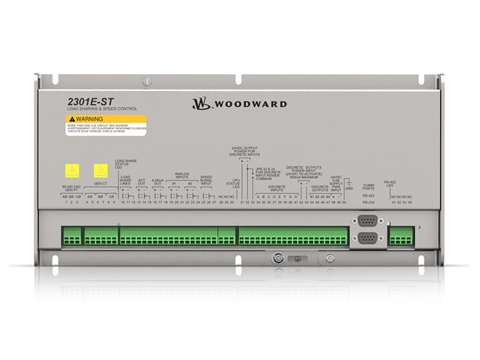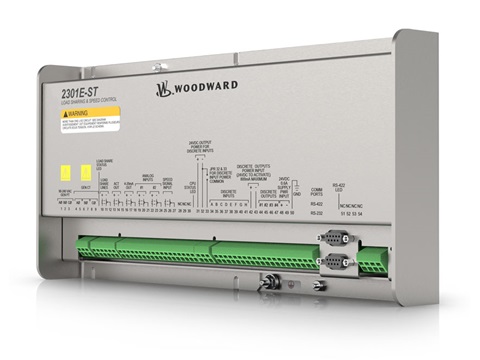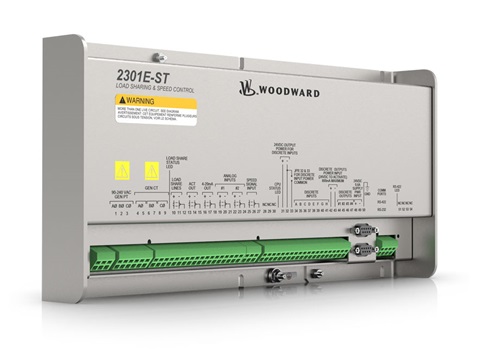The 2301E-ST performs the core control and protection functions of a small steam turbine package. The application software is field configurable, allowing it to be configured and modified to meet site-specific requirements. Modbus communications also allow easy interface with a package PLC or plant DCS.
The 2301E-ST controller is backward compatible with existing 2301D-ST controllers since it has the same form, fit, and function. The new controller insures the ongoing availability of a proven, versatile product with enhanced features:
- Accepts two redundant MPU speed signal inputs
- Separate RS-232 and RS-422 serial ports, both with 9-pin connectors
- Additional status LEDs for power and RS-422 communications
- Fault data logging capability with 16 seconds of data collected every 10 milliseconds on the event of a shutdown, peak speed and load detection
- Low-current PWM output for driving Woodward’s L-Series, F-Series, P-Series and PISC actuators
- New terminal blocks accommodate additional I/O, with a majority of the terminals located in the same position as the 2301D-ST models.
- Major compliance certifications
The 2301E-ST has four operating modes:
- Speed Control
- Has multiple dynamics flexibility. Will work on pumps or compressors. Has capability for remote 4–20 mA speed reference through a configurable analog input.
- Isochronous Load Sharing
- Is compatible with most existing analog load sharing speed control systems. Now with soft load and unload capability.
- Droop Base Load
- Adjustable load control using discrete raise and lower contact
- Isochronous Base Load
- Provides constant load level operation against a utility bus. The load setting may be fixed orchanged using discrete raise and lower inputs or a remote 4–20 mA input.
Application Notes
Brochure
Product Specification
Software Manual
Technical Manual
Software




